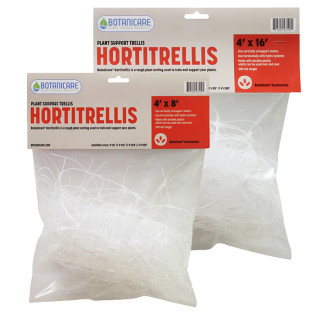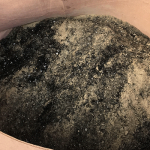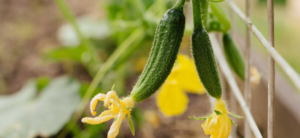
When you first hear of the training technique known as monster cropping, it may sound really strange.
It involves a weird process known as revegging, and requires you to be strategic with your grow room space.
But this technique has grown in popularity over the years, and for good reason.
It’s a bit different than other styles of high stress training, such as super cropping, but it still may help you increase your yield when done correctly.
We’ll teach you everything you need to know about monster cropping, including what it actually is, how to do it, and why you may want to do it.
What Is Monster Cropping?
Monster cropping is a really unique plant training style in which you take clones from your flowering plant, and revert them back to veg (known as revegging).
You’ll put these clones into an 18/6 photoperiod, and allow them to grow into big, robust plants at which point you’ll flower them.
This means you can set up a perpetual harvest, without even needing a mother plant to continually pull clones from. Instead, you simple take a few clones from each flower plant and keep the cycle going.
Does Monster Cropping Really Work?
Something you may have always heard is that you don’t want to train or prune plants during flower. This is usually when you want to just let plants do their thing.
But, the results many growers have achieved with monster cropping speak for themselves. The act of taking clones from a plant deep in flower results in high levels of stress. Let’s talk about why this is actually a good thing.
Making The Case For Stressing Your Plants Out
Plants get stressed out when faced with adversity, just like humans. And, cutting off branches of growth is definitely stressful for them!
But, this stress can lead to insane growth and resin production. It’ll also lead to an increase in terpenes and flavonoids. The plant thinks it’s dying, so it makes a last ditch effort to try and get pollinated, by pushing out the most flavor, aroma, and resin possible.
The end result of this is a more bountiful, more potent harvest. Better weight, better quality.
Let’s discuss some of the other advantages of monster cropping your plants.
Advantages Of Monster Cropping
The most obvious advantage of monster cropping is the continual harvest. You can set up multiple chambers, and while your fresh clones are revegging you can finish flowering your other plants, and harvest them.
By that time, you will be ready to bring your fresh, revegged plants into the flower chamber to repeat the process. You’ll be able to get more out of your grow this way.
This also allows you to preserve awesome genetics. Say you only had a few seeds of a strain, and as you start flowering you realize how great your plants are, and you want to keep growing them. Monster cropping allows you to do this.
On top of that, growers who monster crop their plants notice the revegged plants yield higher than standard clones. They grow into huge bushes with tons of side branching and lateral growth. More colas, more weight!
Disadvantages Of Monster Cropping
Of course, this plant training technique isn’t for everyone. Monster cropping can be challenging, and won’t work with those who have space and time constraints for their grow.
If you don’t have space to set up different chambers for veg and flower, you won’t be able to take full advantage of this training style.
Furthermore, revegging is highly stressful not just on the plant you took clones from, but the new clones themselves. Not every one of these will root, so you’ll need to take ample cuttings to ensure a high enough success rate.
If you prefer to grow autoflowers, monster cropping won’t work for you. Because these don’t grow according to a lighting photoperiod, you cannot manipulate veg and flower periods.
Some growers claim a disadvantage of monster cropping is that it adds a lot of time to the growing cycle, but this isn’t necessarily accurate. Compared to starting from seed, your revegged clones will still be ready to harvest quicker.
Now that you are aware of the pro’s and con’s of monster cropping, you are ready to learn how to do it!
Depending on where you grow - indoors or outdoors - the strategy will vary a bit. We’ll start by explaining how to monster crop your plants indoors.
How To Monster Crop Your Indoor Plants
To monster crop indoor plants, you need to start by thinking things through before you even start growing.
Choose strains that grow to a medium size, because short strains tend to grow slower and you won’t be able to really take advantage of this training.
Conversely, tall strains go too quickly and you won’t be able to control their growth as well.
When preparing to monster crop, choose plants that look the healthiest and hardiest. And, regular plant training rules still apply. This means you should always be trying to cultivate a flat canopy, with just main colas.
When To Take Your Clones
As far as when you should actually take the clones from your flowering plants, most growers recommend waiting until 2-3 weeks into flower.
From there, it’ll take around 2-3 weeks to get these cuttings rooted. From there, the reveg will be underway and you can start pushing out some vegetative growth for a few weeks before starting to flower those clones.
How To Take Your Clones
Now, when the time comes to take your clones, here is how to actually do it: Start by grabbing all your tools. Here is a checklist of necessary tools and supplies to get this done right:
- Garden shears, knife, or scalpel (ultra sharp)
- Disinfectant of some sort to prevent contamination from your tools
- A jar of water to stick your cuttings in while you work
- Rooting gel (to increase the rooting success rate)
- Rockwool cubes (to stick your cuttings in to start rooting)
Start With Your Best Flowering Plant
You want to start with your best specimen first. Once you’re three weeks into flower, locate this plant.
The reason you only want to monster crop your best plants is because this is a stressful process, and you’re essentially duplicating genetics.
If you choose a plant that looks sick or weak, it will have a much harder time revegging. It may never root. And if it does, you just duplicated a sick, weak plant, those same characteristics will apply to this new plant.
Disinfect Tools, Take Your Cuttings

Once you know which plants and specific cuttings you’re going to take, sterilize your scissors or shears so you don’t contaminate your plants.
We have an entire blog post on how to clone your plants, but we’ll quickly summarize best practices for you. You want to take a cutting from the lower half of your plant ideally, and this cutting should have a few nodes on it.
Make a diagonal cut, and then place the cutting into a glass of water or dip it in your cloning gel, and then place it in a rockwool cube.
Repeat this as many times as you want, but we always recommend taking more cuttings than you actually need. You can expect to lose up to 1 out of every 4 cuttings you take.
Speeding Up The Rooting Process
Using right rooting gel is the best way to speed up the process of getting these cuttings to root.
Your clones should be under a 24 hour lighting cycle ideally to get the reveg going, but even a standard 18/6 photoperiod will work fine.
You’ll need to be patient, as it can take up to a few weeks for roots to pop out the bottom of your rockwool cubes.
Be aware that revegging can lead to some weird looking plants at first. You are quite literally mutating the plant, and so abnormalities are to be expected.
Once they are rooted, though, you can start vegging them as you normally would and ultimately flip them to flower when the time comes.
Can Monster Cropping Be Done Outdoors?
If you are growing outdoors, you can still monster crop your plants. That is, depending on where you live.
If you live in more mild climates, you’ll have an easier time making this plant training strategy work because it requires you to plant earlier in the year.
If you live in a colder climate where your outdoor growing season is shortened, you can still monster crop your plants.
But you’ll need to start growing indoors first, and harden them off before moving them outdoors once the risk of frost has passed. In most cases, this is around February.
When done correctly, you can get a harvest out of the way before spring comes and then you can take some cuttings from these plants, reveg them, and start your next outdoor grow cycle!
How To Get The Best Results With Monster Cropping
The growers who see the best results from monster cropping couple this strategy with another plant training technique to further maximize lateral plant growth.
This can be topping or SCROG (screen of green), but we recommend the SCROG method because you are going to need to set up a trellis net anyway.
You can then weave shoots of growth through the support system and open your plant up, getting light deeper into each and every plant. The net also helps support the weight of the heavy buds you are going to be cultivating come flower!
Final Thoughts On Monster Cropping
Now that you’ve read this far, you know monster cropping is just a fancy way to get a perpetual harvest going and stretch your grow further than before.
By monster cropping, you will be able to preserve genetics you love while increasing yield, in some cases squeezing extra harvests into the same growing calendar.
All that’s left to do now is grab whatever supplies you need from Hydrobuilder.com and try it out yourself!


































